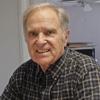A principal reason the Second Vatican Council succeeded was the personal outreach and friendships that Pope John XXIII made before and after the council.
This is the appraisal of Bishop Remi De Roo, emeritus bishop of Victoria, British Columbia, one of the few still living bishops who attended all four sessions of the council, held from 1962 through 1965.
At age 38, he was the youngest bishop at the council. Now 85, De Roo describes himself as a “Pilgrim of the Second Vatican Council.” He says his pilgrimage is “mainly giving retreats and contemplating the signs of the times in light of sacred scripture and our rich tradition.”
NCR spoke with De Roo Jan. 27, 50 years and two days after Pope John XXIII called for an ecumenical council—Vatican II.
Recalling Pope John, De Roo said that he was “conscious of the Holy Spirit in the signs of the times.”
“The pope said there were three particularly important signs. The first was the rising consciousness of the working people. People do not want to be only workers or objects but the subject of their own future.”
The second sign, said the bishop, was “women emerging in history. They do not want to be seen as subjects, but rather to be recognized for themselves. Pope John recognized this even before the growth of the feminist movement—feminist in the best sense.” But, he noted, the role of women was not on the agenda for Vatican II.
The third sign for Pope John was “the emerging nations,” De Roo said. “The pope said there can be no peace as long as some nations see themselves as ruling over others. Peoples and cultures are claiming their rights, and they want to be respected.”
De Roo concluded that a principal reason the council succeeded was the outreach and friendships that Pope John made before and after the council. These friendships included Archbishop Geoffrey Fisher, the Anglican primate of England, and Nikita Khrushchev.
But the Roman curia was upset with the pope’s openness, friendships and inclusiveness, the bishop said.
A telling example of the pope’s outreach was his demeanor when he was visited by a group of 100 rabbis, said De Roo. Pope John welcomed the group, saying, “I am Joseph, your brother.” And the pope ignored his throne and sat in the midst of the rabbis.
De Roo said that Pope Paul VI refined Pope John’s vision. First, “a new awareness of the inner nature of the church—the church is a movement or a process of the Holy Spirit in history gathering the people of God.” In this vision, all people are equal in dignity. And, said the bishop, the church is expressed as a “circle of friends, not as a pyramid.”
Second, said the bishop, is renewal and reform, stripping away what is defective. This is the process of aggiornamento, bringing the church up to date. Third is a return to the “early origins of the church to draw from the wellspring.”
Asked what we have learned over the last 50 years, De Roo said, “So much, almost too much for me to say. We must trust the Holy Spirit who moves through the signs of the times. We must listen to the grass roots and remember that there are not two classes of people in the church and that we are all equal. Finally, to repeat, the church is a movement.”
The bishop added that “the church is a people as well as structures,” and a pastoral council is “more important” than a doctrinal council. He noted that “more than a series of doctrines, religion is a way of life.”
De Roo emphasized that we have learned greater respect for freedom of conscience. He also said that there is “a hierarchy of truths. The divinity of Christ is at the top of the list. Also on the list is respect for freedom of conscience.“
“We need to explain in new words the old truths so today’s people can hear and understand,” he said. Also needed is recognition that “all world religions contain the seeds of the Word of God, and there is an effort in these peoples and cultures to express the divine.”
Asked if he thought there were any major disappointments in the past 50 years, De Roo cited the Roman curia. “It is like a civil service and maintains the status quo.” And, he said, a minority in the church has been working to turn back the clock to a more static teaching. They see the church as a static body rather than a movement.
De Roo said that “today it is most important to form the circle of friends. All are called to transform the world—all the structures, all the new inventions, are amenable to the grace of God. In the circle of friends we are all invited to place our gifts.”
In conclusion, the bishop said that “this is a historical moment—a time for the people at the grass roots to reclaim their church and the vision of Vatican II. It is not just for bishops. It is a time to move beyond petty issues. It is a time to listen to the Spirit.”
[Jason Petosa, a former NCR publisher, is the owner of Steadfast Publishing in Kansas City, Mo.]




